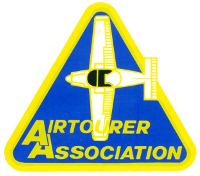Stream Take-off
Stream take-offs (sometimes called interval take-offs) are flown when existing conditions would make a close formation take-off hazardous, eg. strong crosswind, wet or narrow runway, short runway, very high OAT or FOD on the runway.
Line up is carried out as for a standard element take-off. When ready to
commence the take-off, the Lead will ask the formation to
check-in. Each member of the formation, when ready, will make
the call [Callsign] Ready
in formation
sequence. (If radio calls are being minimised, the Lead might
alternatively look for a thumbs up from others in the
formation.)
Lead will run up to full power individually, check the engine, then release brakes and carry out an individual take-off. Lead is to reduce power by 2" MAP (instead of setting 26" MAP) during the after take-off checks.
Stream take-offs are carried out with a minimum spacing of three seconds between aircraft. The Wing will see the nose of their Lead's aircraft dip as Lead sets power. The Wing will conduct their own run-up and be ready to release brakes after counting out the three second (or briefed interval) split. The same procedure continues for all following aircraft in the formation.
Due to the lower power setting, the after take-off and climb out attitude will be slightly shallower than for a normal full power individual take-off. When comfortably clear of the ground, the Lead will raise the flaps. The following aircraft should raise the flaps when comfortably clear of the ground.
The Wing must ensure that they turn upon reaching 500 ft AGL so that he or she can intercept the rejoin line. Failure to do this will result in the rejoin becoming a tailchase. Leave full power set until ready to join up.
